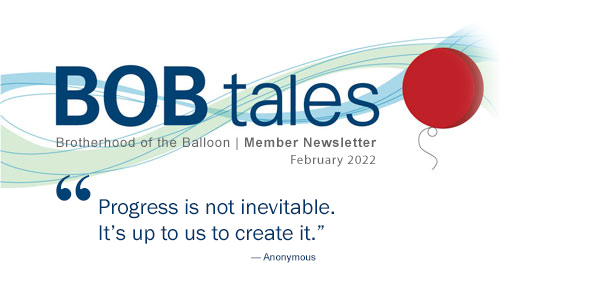
Dear Members (a note from Deb Hickey):
I’m back in the cave.
Just a few short months ago, I could walk out my front door and see neighbors trimming their hedges, mowing their lawns, or sitting on their front steps with a Dunkin’ iced latte chatting it up with the postal carrier … six feet apart, but still able to look each other in the eyes.
I live in the northeast. So, it’s now 12 degrees and I only go outside to walk my dog.
It’s depressing. This global pandemic has transformed nearly every aspect of our lives. One that’s affected me deeply is the inability to socialize. I miss seeing my neighbors. I miss my friends. I miss entertaining. I miss dinners out.
My home has become my cave – and not in a good way.
I worry about my family getting sick; how masking at school is affecting my dyslexic daughter’s progress … add to that some more things to ponder, including: growing political divisiveness, accelerating inflation, potential war in eastern Europe, random acts of violence, record floods and wildfires, our adversaries testing hypersonic missiles, and there’s even a superbug fungus and an outbreak of Monkeypox in the U.S.! I’m thinking seriously of crawling into bed and staying there.
Well, maybe it’s not really that bad. We’ve always had to deal with infectious diseases, political conflicts, world instability and unfortunate acts of nature. We live in challenging times, but we’ve always survived, and we’ve come out the other side smarter and stronger.
In the meantime, I’ve learned some self-care strategies that have really helped. For example, I stopped watching the news. Instead, if I’m going to sit in front of the tube, I watch Seinfeld reruns or the Great British Baking Show. Although I can’t promise the latter won’t make you crave chocolate choux buns.
 To feel more connected to people, I’m making an effort to find more ways to support others. I just finished making a diaper cake for my friend who’s due with her third baby any day, and I’m making meals for a woman across town who’s going through chemotherapy for breast cancer. It’s amazing how helping others can make you feel so good.
To feel more connected to people, I’m making an effort to find more ways to support others. I just finished making a diaper cake for my friend who’s due with her third baby any day, and I’m making meals for a woman across town who’s going through chemotherapy for breast cancer. It’s amazing how helping others can make you feel so good.
There are other self-care strategies out there: get plenty of sleep; eat a balanced diet; amp up your exercise routine …
Hopefully, it won’t be long before I step outside to hear the familiar drone of the mowers. In the meantime, I’m going to buy some pastry tools.
------------------
In this issue of BOB Tales, find out why there’s extreme interest in focal therapy for prostate cancer by both patients and the medical community. We have some excellent news on Medicare’s Radiation Oncology Alternative Payment Model – thanks, in part, to you, our members. We share three important health tips from an old newsletter that are still quite relevant today. Find out why maintaining vitamin D levels within the high end of the normal range may lower the risk of COVID-19 – especially for black people. Men, learn the importance of self-testing for breast cancer – yes, male breast cancer. Find out which vitamin may increase risk of prostate cancer and death, as well as the preexisting conditions that may further increase risk. Learn how yoga can promote an improved quality of life among patients with prostate cancer. Also, we share Step 4 from the most important chapter in Bob Marckini’s second edition book, Chapter 18, titled, “Ten Steps for Taking Control of the Detection and Treatment of Your Prostate Cancer.”
And finally, BOB members, next month we’ll be telling you about, what is in our opinion, one of the most important and significant books on health, nutrition and lifestyle ever written. It was brought to our attention by one of our members who told us how it changed his life. We think this book is so important, it has the potential to change your lives as well. It’s a new way of looking at nutrition and health, and with significant research and documentation, it helps us understand that we may have the power to prevent and reverse a wide range of diseases. We will start our review next month focusing on prostate cancer. You don’t want to miss this series. Stay tuned.
We hope you enjoy the BOB Tales. And as always, we welcome and encourage your feedback. Please send an email to [email protected].
Deb Hickey
To print the BOB Tales newsletter or view the newsletter with a larger font size, click here for the PDF file. .jpg)
.jpg)
In This Issue:
- Interest Grows for Focal Therapy in Treating Prostate Cancer
- Medicare’s Radiation Oncology Alternative Payment Model: Your Voice Made a Difference!
- Three Important Health Tips
- Vitamin D Levels May Help Protect Against COVID-19 Especially for Black People
- What Men Need to Know About Male Breast Cancer
- Vitamin Supplement May Increase Risk of Prostate Cancer and Death
- Benefits of Yoga for Prostate Cancer Patients

.jpg)
Interest Grows for Focal Therapy in Treating Prostate Cancer
According to a recent article in the Urology Times Journal, “Forty percent of patients have treatment regret after being treated for prostate cancer because they feel like their quality of life was affected so much that the treatment was not worth it.” The article points out that the development and implementation of focal therapy for prostate cancer has the potential to significantly mitigate this problem.
Types of Focal Therapy
There are many types of focal therapies including focal cryotherapy, high-intensity focused ultrasound (HIFU), focal laser ablation (FLA), focal cryotherapy and focal proton therapy, to name a few. A question we’re often asked by newly diagnosed patients is, “Focal therapy is used for treating other cancers, why not prostate cancer?”
The Appeal in Using Focal Therapy for Prostate Cancer
The interest in focal therapy for prostate cancer is motivated by several factors: 1) If focal therapy can destroy lesions within the prostate, then perhaps whole gland treatment isn’t necessary; 2) Focal therapy is typically short duration therapy, often one treatment in an outpatient setting; 3) If the whole gland isn’t treated, then the likelihood of side effects like impotence and incontinence are minimized or eliminated; 4) If there is a recurrence after the initial treatment, follow-up focal treatment should be possible, and finally; 5) A single, outpatient focal treatment would cost substantially less than hospital-based whole-gland treatment, making it more attractive to medical insurers to reimburse.
An Argument Against Using Focal Therapy for Prostate Cancer
A primary argument against focal prostate cancer therapy in the past has been the fact that imaging technology hadn’t developed to the point where it could find all the cancer/lesions in the prostate, and therefore, treating one or two lesions could easily leave cancer behind untreated. Whole gland treatment, therefore, can attack and destroy all the cancer in the prostate leaving doctor and patient confident in the outcome.
Change is Coming
While focal therapy is still considered investigational and there’s minimal long-term data supporting it, it’s an area of extreme interest by both patients and the medical community.
One of the most important enabling technological developments in recent years has been advances in multi-parametric MRI imaging technology, which we’ve covered quite extensively in past BOB Tales as well as in Bob’s new book. This new imaging, when combined with image-guided biopsies such as fusion-guided biopsy, can give doctors a much better picture of cancer activity within the prostate and a more clearly defined target for the biopsy needle. As a result of these developments, more is known about the extent and location of cancerous lesions and doctors have more confidence in cancer staging.
Researchers believe that more than 90 percent of patients could be served well with focal therapy. But there are many hurdles to overcome.
Widespread use of focal therapy for treating prostate cancer isn’t right around the corner, but researchers believe we’re on the right track and the goal will be reached in the not-too-distant future.
There’s an organization called The Focal Therapy Society whose mission is to advance and position minimally invasive treatments and image-targeted cancer treatment in a safe and effective gland-preserving manner to extend and maintain quality of life. Let’s hope they’re successful in achieving their objectives.
Your Voice Made a Difference!
We have excellent news! Medicare is delaying implementation of the Radiation Oncology Alternative Payment Model (RO APM). Congress recently passed a bill that postpones implementation of the Medicare reimbursement cuts until January 2023.
For more than two years, proton therapy advocates – including many of our members – have emailed and called state representatives and met with members of Congress to share their stories and express their concerns about the new model. The proposal would have cut reimbursement for proton therapy to a rate that wouldn’t come close to covering the cost of treatment.
This much-needed reprieve will allow more time for the proton therapy community to work with elected representatives and Medicare officials toward meaningful changes in the RO APM that will hopefully exclude proton therapy from the experimental reimbursement policy. We hope that by continuing the dialogue and sharing evidence-based research that demonstrates the clinical and cost-saving value of proton therapy, we will succeed.
So, on behalf of all of the patients who will have better access to proton therapy because of your efforts – thank you!

We’ve been producing BOB Tales newsletters for more than 20 years. During this time there have been articles that many new members haven’t seen, and some older members may have forgotten. So, we periodically re-run articles from past newsletters. The following is from October 2006.
Three Important Health Tips
Drink juice for your brain.
You see them on those late-night infomercials - juicers that promise to save you time and transform your life. All hype? The juicer might be, but the juice isn’t. Drinking pure juice regularly - be it apple, tomato, or orange - may help ward off Alzheimer’s. How? It’s probably the polyphenols - the antioxidant-like substances that protect the brain from the damage that leads to Alzheimer’s plaques. But you don’t need a $100 gizmo to get the benefits. Drinking pure juice from a carton a few mornings each week works just as well.
When breathing, go deep.
Most people breathe the way they dance - they think they know what they’re doing, but they really don’t have a clue. Stop for a second and focus on your breathing. Now look down. See anything moving? Probably not. That’s because most people typically take very short, shallow breaths - the kind that simply come from your chest. For you to really improve your lung function, you need to practice taking deep, whole breaths. It should take about five seconds to inhale and seven to exhale. And your belly should get big, then small.
Remember what makes the lungs move? Your diaphragm. That’s the muscle that pulls your lungs down, so your lungs expand, and you can really circulate oxygen throughout the whole lung. As your diaphragm pulls your chest cavity down and you inhale, your belly button should be moving away from your spine as you fill your lungs. Your chest will also widen and maybe even rise slightly as you inhale. When your lungs feel fuller than a sumo wrestler’s lunchbox, exhale slowly. You can pull your belly button toward your spine to force all the air out of your lungs.
Okay, so now you know how to breathe deeply, but what are the benefits? There are lots, actually. For one, it helps transport nitric oxide, a very potent lung and blood vessel dilator that resides in your nasal passage, to your lungs. So, it makes your lungs and blood vessels function better. Taking deep breaths helps your lungs go from 98 percent saturation of oxygen to 100 percent saturation of oxygen. Another benefit is that it helps improve the drainage of your lymphatic system which removes toxins from your body. And the deep breaths act as a mini meditation, and from a longevity standpoint, that’s an important stress reliever.
Try to take at least 10 deep breaths in the morning, 10 at night, and several more times during the day.
Take the stairs.
 How can you improve your cholesterol and your lung function in a mere 11 minutes? Take the stairs. We’re not talking Empire State Building stairs, either. If you climb a couple flights of stairs for just two minutes, five or six times a day, you’ll be covered. People in a study who did just that increased their cardiorespiratory fitness by 17 percent and reduced their “bad” LDL cholesterol by 8 percent in just eight weeks. That means a younger RealAge and a longer life, so start climbing. Once it’s a habit, you’ll
How can you improve your cholesterol and your lung function in a mere 11 minutes? Take the stairs. We’re not talking Empire State Building stairs, either. If you climb a couple flights of stairs for just two minutes, five or six times a day, you’ll be covered. People in a study who did just that increased their cardiorespiratory fitness by 17 percent and reduced their “bad” LDL cholesterol by 8 percent in just eight weeks. That means a younger RealAge and a longer life, so start climbing. Once it’s a habit, you’ll
hardly notice the effort.

Member Support
The support we receive from our members is overwhelming. Of course we truly appreciate the monetary support in terms of contributions to proton research via the Robert J. Marckini Chair at Loma Linda, but just as important, we appreciate the time and energy our members give to help newly diagnosed men and their families navigate the confusing labyrinth of prostate cancer treatment options.
One by one, we’ve recently been updating and enhancing some of our former proton patient reference lists. Lately, we’ve seen an uptick in requests to speak with former proton patients; and these requests are not always quick and easy. Some of these newly diagnosed men want to speak with men in their city; some want to speak with pilots; some are interested only in men who were treated last year … or 15 years ago. Some want to speak with members’ significant others – but only those whose partners had surgery before proton therapy … and live in Seattle. We’ve received requests to speak with men who’ve had hip replacements, irritable bowel syndrome, hemophelia, a kidney transplant …
We could go on.
Last month, we sent a request for members living in Australia to be included on our former proton patients reference list. Following are a few responses we received.
I’m more than willing to help with anything you ask of me. I was treated at Loma Linda in 2014 and I can’t say enough about my experience. I never thought having prostate cancer would allow me to vacation in California. I appreciate all the BOB does – especially that newspaper you send out every month. As a thank you to you and to Loma Linda, I’m willing to pay it forward in any way that I can.
Another member wrote:
Yes! I’m happy to help. After 16 years, I’m feeling very well and my PSA is low. I’m 83 years old now, but I feel like I’m 60. Every morning, I do a half hour of yoga, one hour of walking, and then I garden. The rest of the day is spent doing office work or relaxing.
We’ve also begun adding to our “Members Age 50 and Under” list and therefore reaching out to some of our younger members. Following are a few responses we’ve received.
Absolutely! I’m living my best life because of proton therapy. And I owe it all to Bob Marckini for writing his book. Had it not been put in my lap (literally), I’d probably be divorced and wearing a diaper. I’d be honored to direct men to this tissue-sparing, painless, miracle treatment called proton therapy.
Another member wrote:
I beat the cancer that every man is afraid of – with a treatment that left me with none of those horrible side effects we all have nightmares about. It is my pleasure to show my appreciation by helping others – especially young guys who have long futures ahead of them.
And another member wrote:
Of course I’ll be included on your list. I still feel funny when people ask about my cancer treatment. It seems odd to tell them it was “easy.” It was a non-event, really. So when men are scared and confused by what to expect, it thrills me to nonchalantly tell them to just go have proton treatment. I’m a walking example of why.
There are dozens and dozens and dozens of these emails in Deb’s inbox. She can barely keep up with them. And although our members have always been extremely responsive and willing to help, it never ceases to amaze us when they come through the way they do.

Thank You
We are overwhelmed with the number of members (and others) who made contributions to proton research via the Robert J. Marckini Chair in 2021. Your support is helping researchers who are studying new applications for the proton beam as well as physicians and scientists who are conducting clinical studies to determine better ways to use proton therapy to benefit more patients. Your gifts allow doctors to use proton technology to treat new cancer sites and new medical conditions.
No matter the amount, you truly have and continue to make a difference. Thank you.
.jpg)
Giving Options
- Donate to proton research online.
- Write a check to LLUCC Proton (Put “Marckini Chair” on the memo line) and mail to LLUH, Office of Philanthropy P.O. Box 2000, Loma Linda, CA 92354.
- Make an unrestricted gift (put “unrestricted” on memo line) so LLUH can use it where it’s needed most.
- Call Regina Joseph at 909-558-5010 to donate over the phone.
.jpg)
.jpg)
.jpg)
Don't Just Stand There
In an effort to boost funding for basic and clinical proton therapy research on prostate cancer, pancreatic cancer, liver cancer, breast cancer, and more, we asked our members to donate $100 (or more) to Loma Linda University Cancer Center. In return, they’d receive an advance copy of Dr. William Preston’s book, Don’t Just Stand There – Realizing a Vision for Proton Therapy: Conversations with James M. Slater, MD, FACR. The response so far has been phenomenal. Thank you to all who’ve requested a copy.
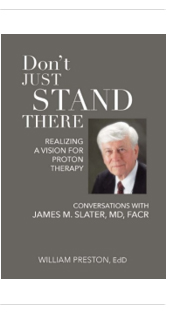 If you’d like a pre-published copy of “Don’t Just Stand There,” please send a check for $100 or more, payable to “Loma Linda University Proton Cancer Research” and mail it to:
If you’d like a pre-published copy of “Don’t Just Stand There,” please send a check for $100 or more, payable to “Loma Linda University Proton Cancer Research” and mail it to:
Loma Linda University Health ● Office of Philanthropy ● PO Box 2000 ● Loma Linda, CA 92354
Please notify Deb Hickey at [email protected] that you’ve sent in your check and your book will be mailed immediately.
Don’t Just Stand There, which contains high-quality color images and illustrations, is not only about Dr. Slater’s quest to create the world’s first hospital-based proton treatment center, it’s also a teaching guide. As the Proton Treatment & Research Center at Loma Linda was such an immense endeavor, Dr. Slater wondered if the aspects of conceiving, planning, and orchestrating such a project, among others he undertook, might be instructive to others. Over the years, he’d also met people in all walks of life, many of whom had dealt with large and complex problems. He was struck by some of the stories they told about their work. And although the fields or disciplines usually had nothing to do with medicine, many experiences were similar. And so, he kept this in mind while he worked on the book with Dr. Preston.
We’re sure you’ll thoroughly enjoy the book and we know it will occupy a place of honor
in your home. And, you’ll be helping to fund basic and clinical proton research on prostate cancer, pancreatic cancer, liver cancer, breast cancer, and much more with your tax-deductible gift. Thank you!

Vitamin D Levels May Help Protect Against COVID-19 Especially for Black People
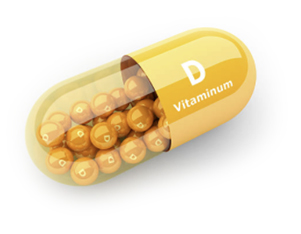 Maintaining vitamin D levels within the high end of the normal range may lower the risk of COVID infection, especially among black people, reports a 2021 study from the University of Chicago Medicine and published in JAMA.
Maintaining vitamin D levels within the high end of the normal range may lower the risk of COVID infection, especially among black people, reports a 2021 study from the University of Chicago Medicine and published in JAMA.
Doctors have long held that maintaining healthy levels of vitamin D can strengthen your immune system, and many in the U.S. are deficient in this important vitamin, especially during the winter months when sunlight exposure is limited.
While the recommended “normal” range of vitamin D, measured in nanograms per milliliter (ng/mL) is typically between 30 and 100 ng/mL (some doctors recommend 20 – 50 ng/mL), most people have no idea as to what their vitamin D level is. The Harvard School of Public Health states that a vitamin D level of 20 ng/mL or higher is adequate for good bone health, and levels below 20 are considered a vitamin D deficiency.
The University of Chicago study found that black individuals with D levels of 30 to 40 ng/ml had a 2.6 times higher risk of testing positive for COVID-19 than those with levels of 40 or higher. No significant associations of vitamin D levels and COVID risks were found with white people.
David Meltzer, MD, PhD, lead author of the study, concluded that study results point to recommendations of maintaining D levels higher than what was considered the normal range in the past, at least for black individuals. He is recommending clinical trials “that can test whether or not vitamin D may be a viable intervention to lower the risk of the disease, especially in persons of color.”
The article published in the journal, UChicagoMedicine, reported that, “Vitamin D can be obtained through diet or supplements, or produced by the body in response to exposure of the skin to sunlight. Meltzer noted that most individuals, especially people with darker skin, have lower levels of vitamin D; roughly half of the world’s population has levels below 30 ng/ml.”
“The adult recommended dietary allowance for vitamin D is 600 to 800 international units (IUs) per day,” said Meltzer. “The National Academy of Medicine has said that taking up to 4,000 IUs per day is safe for the vast majority of people, and risk of hypercalcemia increases at levels over 10,000 IUs per day.”
The blood test used to determine vitamin D levels is called, the 25-hydroxyvitamin D test.
What Men Need to Know About Male Breast Cancer
Breast cancer is most often found in women, but men can get breast cancer too. About 1 in every 1,000 cases of breast cancer is found in a man. About 1 in 833 men will develop breast cancer in their lifetime, compared to 1 in 8 women.
Female vs. Male Breast Cancer
The main difference between female and male breast cancer is that cancer in men tends to present at a later stage, and more aggressive. By the time it’s detected, it’s usually spread to the lymph nodes. It can then spread to other parts of the body.
Early Detection
Unfortunately, we don’t have screening mammography for men like we do for women. Because breast cancer is so uncommon in men, it’s also unlikely to be of any benefit to screen men in the general population for breast cancer with mammograms or other tests. Therefore, it’s important to do self-examinations regularly.
Risk Factors
While men who carry a mutation in the BRCA2 gene have an increased risk of developing breast cancer, most breast cancers in men are not caused by inherited factors. Exposure to radiation treatment to the chest, as well as conditions that increase levels of estrogen, such as obesity, are factors that increase risk of male breast cancer. Other risks include smoking and alcohol consumption. Also, certain medications – especially in patients who have prostate cancer – use estrogen-based therapies that could increase the risk of breast cancer.
One factor you can’t control is age. Most breast cancers in men occur between ages 60 and 70.
Treatment Options
Unfortunately, there’s been little research in male breast cancer, especially in how best to treat it. As a result, treatment options are much the same as treatment in women – anti-hormone drugs, surgery, and radiation (yes, proton therapy).
While this trend is changing and more clinical trial protocols are including men, the FDA drafted a guidance statement in August 2019 to bring attention to the need for inclusion of men in breast cancer clinical trials.
Vitamin Supplement May Increase Risk of Prostate Cancer and Death
Vitamin E is important for vision, reproduction, and the health of your blood, brain and skin. It also has antioxidant properties that may protect cells against the effects of free radicals, which can cause illness and aging.
But there’s a concern by researchers that the oral use of vitamin E – as opposed to vitamin E found in food products – may increase the risk of prostate cancer. There’s also a possibility that people in poor health who take high doses of vitamin E are at increased risk of death, warns the Mayo Clinic.
Researchers at Brigham and Women’s Hospital in Boston, MA found a genetic variation that increases the risk of cancer in some individuals taking vitamin E while decreasing risk for others. Their results are published in the Journal of the National Cancer Institute.
You should talk with your doctor before taking any new vitamins or supplements, but those considering vitamin E should be especially careful if they have:
- A vitamin K deficiency
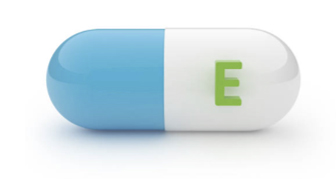
- An eye condition in which the retina is damaged
- Bleeding disorders
- Diabetes
- A history of a heart attack or stroke
- Head and neck cancer
- Liver disease
Benefits of Yoga for Prostate Cancer Patients
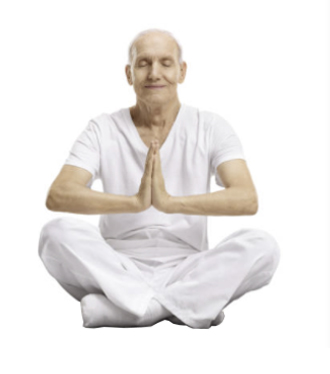 According to research presented at the 2021 American Urological Association’s Annual Meeting, yoga can promote an improved quality of life among patients with prostate cancer. The meditative activity may also result in antitumor immune responses and reduced inflammation in patients undergoing prostatectomy.
According to research presented at the 2021 American Urological Association’s Annual Meeting, yoga can promote an improved quality of life among patients with prostate cancer. The meditative activity may also result in antitumor immune responses and reduced inflammation in patients undergoing prostatectomy.
Yoga also has a direct effect on the vagus nerve, which can send a message to your body that it’s time to relax and de-stress. This is important because patients with prostate cancer have a 20 to 30 percent incidence and prevalence of depression and anxiety.
Previous studies have shown that yoga helps improve quality of life for prostate cancer patients, and also lowers inflammation. And newer data demonstrate that mindfulness exercises, such as yoga, can cause the frontal and limbic parts of the brain to structurally change.
In a recent study, researchers at the University of Texas Health, San Antonio, found that newly diagnosed men who practiced yoga experienced improvements in sexual, physical, and social well-being. There was also an increase in the natural killer cells among these men, “indicating a robust immune response,” said Dharam Kaushik, MD, associate professor in the department of urology at University of Texas, San Antonio.

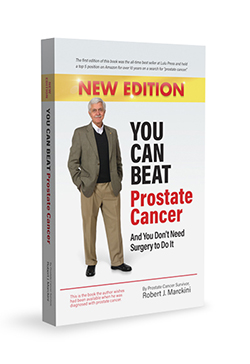 You Can Beat Prostate Cancer: And You Don’t Need Surgery to Do It –Second Edition
You Can Beat Prostate Cancer: And You Don’t Need Surgery to Do It –Second Edition
As of this writing, there are 123 reviews of Bob’s book on Amazon and it still sits in the No. 1 or No. 2 position out of more than 5,000 books on a search for “prostate cancer.” New reviews are being posted monthly, and almost all are five-star.
Following is a recent Amazon review:

A Must-Read Book
Bob Marckini’s book “You Can Beat Prostate Cancer: And You Don’t Need Surgery to Do it” is a great upgrade from his first book. And his first book was very encompassing. His first book helped change the minds (they did protons instead of surgery) of many prostate cancer patients over the past 20 years.
I wish this new Marckini book (or even his first book) had been available when I was diagnosed with prostate cancer in 1999. But it was not. It took me about five months of research to conclude that Loma Linda’s proton therapy (the only one in the world in 1999) was the best treatment for prostate cancer – period.
One year later, my cousin Dr. Richard Carruthers called me for advice about proton therapy for his prostate cancer. Dr. Carruthers also chose Loma Linda’s proton therapy program. After his successful treatment he returned to his anesthesiology practice and gave a “proton seminar" to local urologists. During that seminar, Dr. Carruthers said “I would never anesthetize another prostate cancer patient for radical prostatectomy because I truly had a conflict of interest. I sincerely believe that proton beam radiation is a much better treatment option for MOST prostate cancer patients, thus I chose to NOT be an accomplice to patients who were being subjected to radical surgery.”
During the 20 years after advising Dr. Carruthers, several other doctors who’d been diagnosed with prostate cancer called me for advice about proton therapy. Each of those doctors initially were very determined to have surgery. Well, with the aid of Marckini’s mind-changing book, not just some, but EACH of those doctors canceled their scheduled prostate cancer surgery and chose proton therapy instead. In fact, each of those doctors was treated successfully at Loma Linda University Cancer Center.
Bob Marckini’s book is a must read if you have prostate cancer. If you DO NOT read this book before you choose a treatment, you’re missing an educational opportunity to learn about proton treatment which has the highest success rate and the least side effects.
Step 4 in the 10 Steps
In October we began excerpting from, perhaps, the most important chapter in Bob’s second edition book, Chapter 18, titled, “Ten Steps for Taking Control of the Detection and Treatment of Your Prostate Cancer.” Step 1 was “Choose Your Doctors Wisely;” Step 2, “Have a PSA Test and DRE as Part of Your Annual Physical, And Track the Results.” Step 3 was “Have a Multi-parametric MRI Imaging if PSA is Rising.” Following is Step 4.
Manage Your Biopsy Test if Above Steps Lead to a Decision to Schedule a Biopsy
If the mp-MRI shows suspicious lesion(s) talk with your doctor about scheduling a biopsy, but on your terms.
Have an MRI-Guided Biopsy
As discussed in previous chapters, the MRI-guided biopsy is the latest technology and it provides the best opportunity of finding cancer by targeting suspicious lesions identified by MRI, rather than randomly sampling the prostate using 30-plus-year-old blind biopsy technology. Both the MRI fusion/ultrasound guided biopsy, or the in-bore MRI guided biopsy are excellent choices.
Insist on Local Anesthesia
Biopsies do not have to be painful. Many urologists don’t even suggest using local anesthesia. I suspect that’s because waiting for the patient to “numb-up” slows things down, and fewer patients can be biopsied per hour if anesthesia is used. Keep in mind, the urologist doesn’t feel any pain during the procedure.
Any patient who’s about to undergo a prostate biopsy should ask for local anesthesia. Why experience the pain and discomfort of a biopsy when you don’t have to?
There are several options available to minimize or eliminate discomfort from the biopsy. One study conducted in 2015 and reported in Urology Annals compared three anesthesia techniques: 1) Periprostatic nerve block injection using lidocaine, 2) Intra-rectal lidocaine gel and 3) Pudendal nerve block injection using lidocaine. Researchers determined that while all three provided effective pain elimination, the periprostatic nerve block was the best at pain control.
There are other options available to patients to manage pain during prostate biopsy. All generally work well at providing comfort during this procedure.
If your urologist doesn’t offer the option of pain management for the biopsy test – especially for a 12- to-24-sample biopsy – I’d recommend finding a new urologist.
Take Steps to Prevent Infection from Biopsy
Unfortunately, about 5 percent of patients who undergo transrectal biopsies experience infections, including dangerous sepsis, with up to 3 percent requiring hospitalization. The reason for this is that the standard antibiotic given to patients prior to biopsy is Ciprofloxacin (Cipro). While Cipro is generally an excellent medication in a class of drugs called quinolone antibiotics, used to prevent and treat bacterial infections, a small percentage of patients have bacteria in their intestines that are quinolone resistant, which means Cipro may not prevent an infection.
A simple and inexpensive Culture and Sensitivity (C&S) test involves taking a swab of the rectal area and analyzing it for quinolone resistance. If the bacteria in your gut is quinolone resistant, your doctor can prescribe an alternative antibiotic, such as Doxycycline or Bactrim.
Sadly, this simple low-cost C&S test is not routinely performed at most institutions, though it is gaining in popularity and use.
An alternative to the C&S test would be to ask your doctor to consider combining Cipro with Ceftriaxone along with needle washing with isopropyl alcohol. A 2018 study published in Renal and Urology News (see appendix), showed this technique to dramatically reduce infection rates.
Another alternative is to have the biopsy done through the perineum (space between scrotum and anus), as this prevents infection from fecal matter getting into the bloodstream. While not commonly done, this technique has been used over the years with much success in controlling infection. Northwell Health published an article in 2018 on a newly developed 15-minute, transperineal biopsy that can be performed in an outpatient setting under local anesthesia using standard rectal ultrasound (see appendix).
Biopsy the ‘Old-fashioned’ Way
If for some reason you don’t have access to the latest MRI-guided biopsy technology and you’ll be having your biopsy done the “old-fashioned” way, you can still manage your biopsy.
The typical prostate biopsy involves imaging the prostate using a rectally inserted ultrasound tube, along with a device that contains a spring-loaded hollow needle to take prostate tissue samples. The ultrasound provides an image of the prostate that helps the doctor guide the needle. When the needle is properly positioned, the doctor “pulls the trigger,” and the hollow needle passes through the rectal wall and into the prostate gland where it removes a core sample of tissue.
The more samples taken, the better your chances of finding cancer if it’s there. A study by Robert Bahnson, Chief of Urology at Ohio State University, indicated that one in seven prostate cancers is missed with a six-sample biopsy. You should insist on a minimum of 12 biopsy samples.
My first two negative biopsies were six core samples each. My third biopsy involved eight core samples and two of them were found to be cancerous. I truly believe that, had I insisted on a minimum 12 samples the first time, my cancer would have been diagnosed three years sooner, and I would have been spared two additional biopsy tests.
No one ever wants to hear those awful words, “you have cancer,” but if it is going to happen, it’s unquestionably in your best interest to find it early. Early detection is critically important and will greatly influence the likelihood of a cure. In other words, proper sampling and early diagnosis could conceivably represent the difference between life and death. At the very least, early diagnosis can have significant impact on the quality of life following treatment, as early treatment options tend to be “kinder and gentler” than those used for advanced cancers.
There’s an additional benefit to taking a larger number of biopsy samples. If the results come back negative, you can have a greater degree of confidence that there really is no cancer in your prostate. In my case, being an engineer familiar with the statistical inaccuracies associated with inadequate sampling, I suspected the cancer was there, even though the first two biopsy reports were negative. I didn’t know at the time, however, that I could have requested, or rather insisted, on 12, 16, or even 24 samples. As a result, the cancer had an additional two years to grow inside my body, and possibly even migrate to places outside the prostate. I wish this book had been available to me back then!
► BOB Comment: Since Bob’s book was published, we’ve learned of a new technology that we believe does an even better job of preventing infections from prostate biopsies. It’s called the PrecisionPoint transperineal biopsy (PPTB). Acceptance and adoption of this new technology is spreading rapidly in the U.S., Europe, and Australia, especially at premier medical and urological centers. We’ve written about this exciting technology in previous BOB Tales Newsletters, and will be providing periodic updates in the future.
.jpg)
.jpg)
Did you find Bob’s new book helpful?
If you found Bob’s book helpful, please write a review on Amazon.
We’re happy to discount books in quantity (minimum 20) to anyone interested in spreading the word on proton therapy. Just send an email to Deb Hickey. Proceeds from book sales are used to help fund our efforts and to support proton therapy research.
The Kindle version is free to Kindle Unlimited members or can be purchased for $9.99 for non-members. The paperback price is $22.45. Buy You Can Beat Prostate Cancer second edition on Amazon or Lulu Press.

National Proton Conference
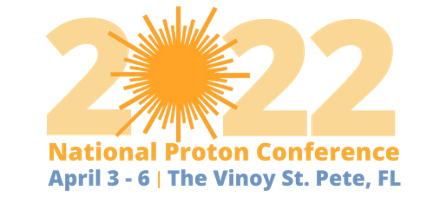 The National Association for Proton Therapy (NAPT) will be holding its next annual conference in St. Petersburg, FL, April 3-6, 2022. There will be two full days of in-person engagement, education, and collaboration among experts in the proton therapy world.
The National Association for Proton Therapy (NAPT) will be holding its next annual conference in St. Petersburg, FL, April 3-6, 2022. There will be two full days of in-person engagement, education, and collaboration among experts in the proton therapy world.
Exhibits: There are typically large halls filled with exhibits showing the latest developments in proton therapy technology, equipment, systems, and support systems. Information is presented on new particle accelerator design, new beam delivery systems, more precise control systems, and many things connected with proton therapy.
Attendance: Proton therapy centers from all over the world send representatives to the conference. Often clinicians and clinical leaders from all the major U.S. proton centers are in attendance, and many participate in panel discussions. Other attendees include physicists, senior administrative officials, and vendors who design and make equipment, products, and systems that support proton therapy and related technologies.
Panels and Presentations: Several presenters and panels will address a variety of proton-related issues ranging from the latest developments in proton therapy research, clinical and technological advances in proton therapy, global proton initiatives, and the economics and sustainability of proton center development and growth.



Last Month’s Brain Teaser
You have three boxes, all sealed. The first is full of oranges, the second full of lemons, and the third full of a mixture of oranges and lemons. All three boxes are incorrectly labeled. You are allowed to pick a piece of fruit from one box only. How can you tell which box is which?
Answer: Take a piece of fruit from the box labeled “oranges and lemons.” That box is incorrectly labeled, so it must be either all oranges or all lemons. Say you pick an orange. Then you know this is the box of oranges. The box marked lemons does not contain just lemons and it does not have just oranges, so it must be the mixture, and the box marked “oranges and lemons” must have the lemons.
Winner: The winner of last month’s brain teaser is a BOB member from Burlington, VT, who wishes to remain anonymous.
.jpg)
.jpg)
New Brain Teaser
How many squares are there?

Send your brain teaser answer to [email protected] for a chance to win a signed copy of Bob Marckini’s NEW second edition book, You Can Beat Prostate Cancer.
.jpg)
.jpg)
Old is Not Easy
If you can’t think of a word, say, “I forgot the English word for it.” That way people will think you’re bilingual instead of an idiot.
I just spent 15 minutes searching for my phone in my car while using my phone as a flashlight.
I don’t always go the extra mile, but when I do, it’s because I missed my exit.
I may not be that funny or athletic or good looking or smart or talented … I forgot where I was going with this.
Life is like a helicopter. I don’t know how to operate a helicopter.
I see people about my age mountain climbing. I feel good getting my leg through my underwear without losing my balance.
I’m at that age where my mind still thinks I’m 29; my humor suggests I’m 12; while my body mostly keeps asking if I’m sure I’m not dead yet.
You don’t realize how old you are until you sit on the floor and then try to get back up.
Life is short. Smile while you still have teeth.
My granddaughter asked me, “After 65 years, you still call grandma ‘darling,’ ‘beautiful,’ and ‘honey.’ What’s your secret?” I said, “I forgot her name five years ago and I’m scared to ask her.”
New York Times’ Best Lexophiles
This was sent to us by one of our members.
“Lexophile” describes those that have a love for sentences such as, “You can tune a piano, but you can’t tuna fish,” and, “To write with a broken pencil is pointless.” An annual competition is held by the New York Times to see who can create the best original lexophile. Following are a few of our favorites.
- I changed my iPod’s name to Titanic. It’s syncing now.
- Haunted French pancakes give me the crepes.
- A will is a dead giveaway.
- Did you hear about the fellow whose entire left side was cut off? He’s all right now.
- The guy who fell onto an upholstery machine last week is now fully recovered.
- Acupuncture is a jab well done. That’s the point of it.
- I didn’t like my beard at first. Then it grew on me.
- Did you hear about the crossed-eyed teacher who lost her job because she couldn’t control her pupils?
- When you get a bladder infection, urine trouble.
- Those who get too big for their pants will be totally exposed in the end.



It's Called Spoofing
Imagine you receive an urgent call from your wife. It comes from her phone number. Her photo even pops up when your phone rings. Or perhaps the call comes from your son. Again, it’s his number along with his photo. When you pick up, the voice sounds hurried as he asks for your credit card number – “it’s an emergency.” Do you give it to him?
Spoofing is a cybercrime that happens when someone impersonates a trusted contact or brand to access your personal information. Spoofing attacks copy and exploit the identity of your contacts, the look of well-known brands, or the addresses of trusted websites. Spoofing can happen through websites, emails, texts, IP addresses and servers, but we think the phone call examples in this video are probably the most alarming. Watch the video, you will be shocked!
Read more to learn about how spoofing happens, the different types of spoofing, how to detect spoofing, and how to prevent spoofing attacks.
Strange but True Facts (Source)
A woman gave birth to twins less than one month after having a baby.
The woman lived in Bangladesh and unexpectedly gave birth to twins in March 2019 less than a month after having another newborn. This highly unusual circumstance came about because the woman has two uteruses. Both doctor and mother were shocked and surprised.
Bumblebees can fly higher than Mount Everest.
Researchers tracked two bees that were able to fly to more than 29,525 feet (9,000 meters), which is higher than Mount Everest.
A human can swim through a blue whale’s veins.
This largest living creature can grow to more than 100 feet in length and weigh more than 100 tons, with a heart the size of a small car, and weighing 1,300 pounds. These creatures have huge arteries that pump blood from their massive hearts to their vital organs. The whale’s arteries are so large that a fully grown human could swim through them.
.jpg)
.jpg)
Quote of the Month:
“If you can't accept losing, you can't win.” – Vince Lombardi



The Hospital Room (Source)
Two men, both seriously ill, occupied the same hospital room. One man was allowed to sit up in his bed for an hour each afternoon to help drain the fluid from his lungs. His bed was next to the room’s only window. The other man had to spend all his time flat on his back. The men talked for hours on end. They spoke of their wives and families, their homes, their jobs, their involvement in the military service, where they had been on vacation.
Every afternoon, when the man in the bed by the window could sit up, he would pass the time by describing to his roommate all the things he could see outside the window. The man in the other bed began to live for those one-hour periods where his world would be broadened and enlivened by all the activity and color of the world outside.
The window overlooked a park with a lovely lake. Ducks and swans played on the water while children sailed their model boats. Young lovers walked arm in arm amidst flowers of every color and a fine view of the city skyline could be seen in the distance.
As the man by the window described all this in exquisite details, the man on the other side of the room would close his eyes and imagine this picturesque scene. One warm afternoon, the man by the window described a parade passing by. Although the other man could not hear the band, he could see it in his mind’s eye as the gentleman by the window portrayed it with descriptive words.
Days, weeks, and months passed. One morning, the day nurse arrived to bring water for their baths only to find the lifeless body of the man by the window, who had died peacefully in his sleep. She was saddened and called the hospital attendants to take the body away.
As soon as it seemed appropriate, the other man asked if he could be moved next to the window. The nurse was happy to make the switch, and after making sure he was comfortable, she left him alone. Slowly, painfully, he propped himself up on one elbow to take his first look at the real world outside. He strained to slowly turn to look out the window besides the bed. It faced a blank wall.
The man asked the nurse what could have compelled his deceased roommate who had described such wonderful things outside this window. The nurse responded that the man was blind and could not even see the wall. She said, “Perhaps he just wanted to encourage you.”
Epilogue: There is tremendous happiness in making others happy, despite our own situations.
Low PSAs to all,
Bob Marckini and Deb Hickey
Special Note: As mentioned in our opening memo, be sure to look for next month’s BOB Tales for the beginning of our eye-opening series on health, nutrition and lifestyle for disease prevention and reversal.
To print the BOB Tales newsletter or view the newsletter with a larger font size, click here for the PDF file.
NO MEDICAL ADVICE: Material appearing here represents opinions offered by non-medically-trained laypersons. Comments shown here should NEVER be interpreted as specific medical advice and must be used only as background information when consulting with a qualified medical professional.
